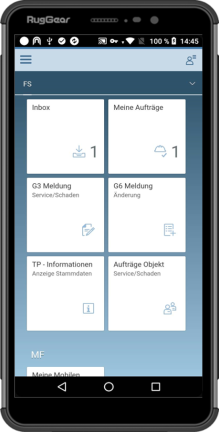You can’t do anything without a smartphone
This – or something like it – was what some Facilities Services personnel probably mumbled under their breath when we introduced the first system to support mobile maintenance in 2004.
Today, most of the technicians sing a very different tune: “I would have gotten a desk job if I loved paperwork.” The mobile software solution is now fully established and universally appreciated by everyone in the department.
That does not mean that the SAP-based solution has not evolved in its 18 years of operation. On the contrary, employees could initially only use their mobile devices to receive order data, issue notifications and enter time logs; today, the entire order fulfillment process takes place online. Paper is only used in cases where a smartphone or tablet cannot render everything adequately, as with complex circuit diagrams that are needed for maintenance work.
However, our mobile solution offers more benefits for service personnel than just eliminating the need to lug around a physical clipboard. It enables seamless data handling, minimizes manual corrections, avoids cancellations of incorrect bookings, improves data quality and helps invoices get issued faster.
Mobile maintenance entered its second phase in 2017 when the original software was replaced. The new solution offers a host of advantages over its predecessor:
- The aging old solution supported a limited range of mobile devices. All these limitations are gone with the new operating system-independent application. It supports everything – smartphones, tablets, PCs. Users thus enjoy the kind of user-friendly experience that they have come to expect, including speech recognition and user-guided operation.
- Facilities Services was thus able to replace all its old mobile devices with industrial-grade smartphones and tablets – which were all thoroughly tested for functionality and practical usability with the technicians’ involvement before they were procured.
- To implement the backend, an application was developed and deployed that enables users to quickly generate all required forms for test results, logs and other purposes. The technicians can use the forms to process orders, reports and functional locations, enter data on their smartphone using the generated forms and then share the data in the SAP system and a customer portal.
Users assigned a service order by their dispatcher or a direct order by the facility service desk will receive a push message reminder and a data package that contains all the documents that the work requires – and nothing more. Technicians no longer have to laboriously hunt for the maintenance history of equipment that needs service. And the electronic folder only contains the forms that are specifically needed for this equipment and for billing this specific customer – with no risk of confusion.
All these devices obviously possess the same communication functions as a smartphone, including calling, email and a calendar.



